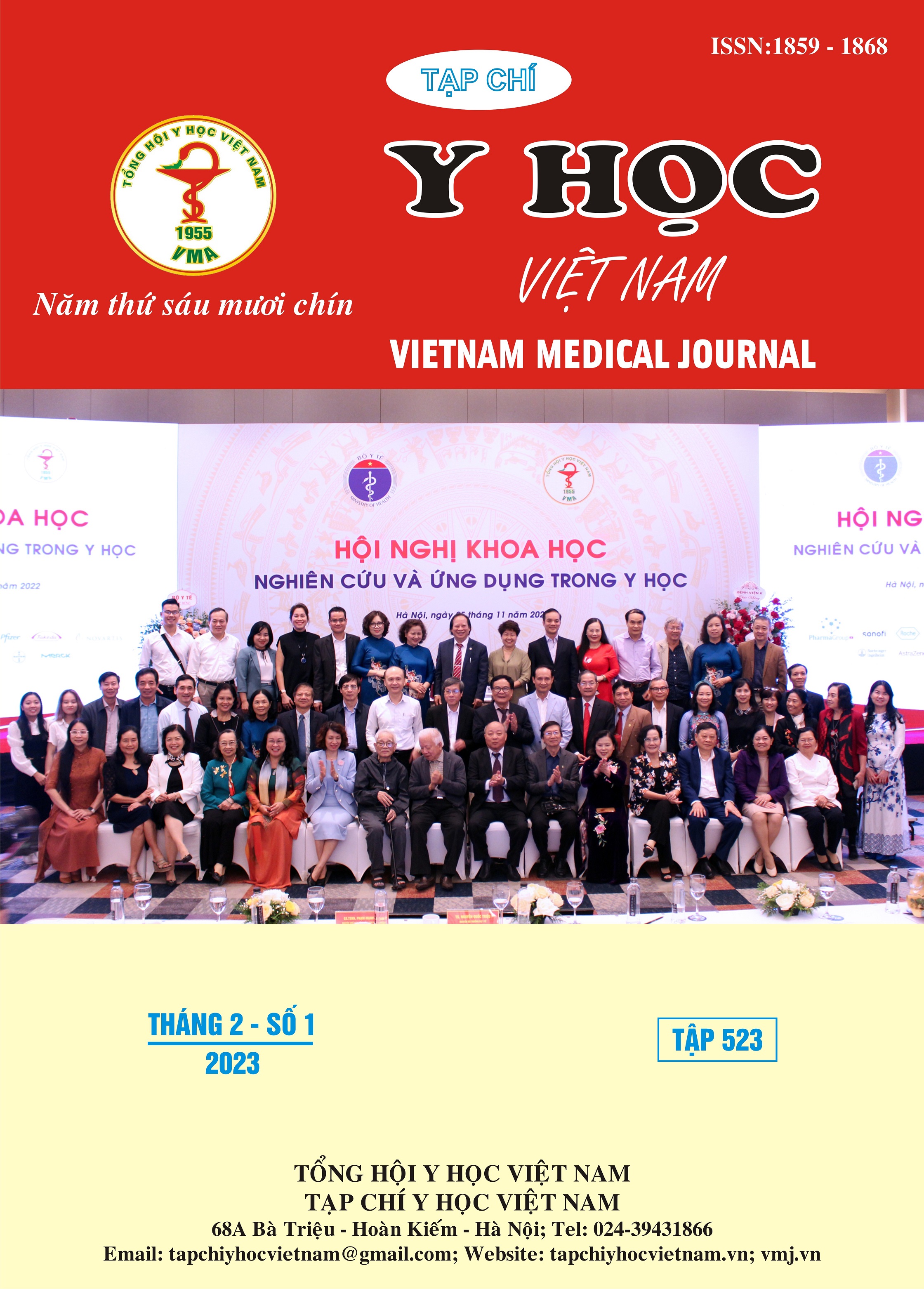LEVELS OF ANTIBIOTIC RESISTANCE OF PSEUDOMONAS AERUGINOSA ISOLATED AT THAI NGUYEN NATIONAL HOSPITAL
Main Article Content
Abstract
Pseudomonas aeruginosa (P. aeruginosa) is an opportunistic pathogen that causes most chronic infections in humans. Objectives: This study was conducted to determine the level of antibiotic resistance of P. aeruginosa strains isolated from clinical specimens. Subjects and methods: A cross-sectional study was conducted at Thai Nguyen National Hospital from 2017 to 2021. P. aeruginosa was isolated from a number of different specimens at the Department of Microbiology. Isolation, identification and determination of susceptibility to antibiotics. Results: Culture was positive 15.87% (7537 strains/ 47500 clinical specimens: Sputum, urine, pus, wound fluid, tracheal aspirate and blood). Of which, 505 strains of P. aeruginosa accounted for 6.70% of the isolates and they were resistant to the antibiotics ceftazidime (37.12%), cefepime (49.41%), piperacillin (23, 00%), piperacillin/tazobactam (18.42%), ciprofloxacin (40.37%), levofloxacin (38.41%), ofloxacin (43.55%), netilmycin (33.73%), tobramycin (34, 93%), amikacin (32.24%), imipenem (27.80%), meropenem (35.57%). Many previous studies have shown antibiotics such as: imipenem, meropenem, ciprofloxacin, gentamicin, amikacin and tobramycin to be good choices, but our study found an increase in resistance to these types of drugs. antibiotics above. Conclusion: It is necessary to determine the level of resistance to antibiotics of P. aeruginosa.
Article Details
Keywords
Pseudomonas aeruginosa, Antibiotc resistance
References
2. Bùi Khắc Hậu và nhóm tác giả (2008). Dịch tễ học phân tử các chủng P. aeruginosa đa kháng thuốc nhiễm trùng Bệnh viện tại Hà Nội; Báo cáo kết quả nghiên cứu đề tài cấp Bộ Y tế, Hà Nội,
3. T. C. Horan, M. Andrus và M. A. Dudeck (2008). CDC/NHSN surveillance definition of health care-associated infection and criteria for specific types of infections in the acute care setting. Am J Infect Control, 36 (5), 309-332.
4. M. Liu, J. Ma, W. Jia và cộng sự (2020). Antimicrobial Resistance and Molecular Characterization of Gene Cassettes from Class 1 Integrons in Pseudomonas aeruginosa Strains. Microb Drug Resist, 26 (6), 670-676.
5. D. Q. Đ. Lê Văn Cường (2022). Sự phân bố và tính kháng thuốc của trực khuẩn mủ xanh tại bệnh viện đa khoa tỉnh Thanh Hóa năm 2020. Tạp chí Y học Việt Nam, 1 (511), 114 - 118.
6. T. M. L. Tăng Xuân Hải, Nguyễn Văn Hùng, Nguyễn Văn Tuấn, (2022). Nghiên cứu tính kháng kháng sinh của một số loài vi khuẩn gây bệnh phân lập được tại Bệnh viện Sản Nhi Nghệ An năm 2021. Tạp chí Y học Việt Nam, 1 (512), 181 - 187.
7. Bộ Y tế (2017). Hướng dẫn thực hành kỹ thuật xét nghiệm Vi sinh lâm sàng, Nhà xuất bản y học, Hà Nội.
8. K. Adeli, V. Higgins, K. Trajcevski và cộng sự (2017). The Canadian laboratory initiative on pediatric reference intervals: A CALIPER white paper. Crit Rev Clin Lab Sci, 54 (6), 358-413.
9. V. Higgins, D. Truong, A. Woroch và cộng sự (2018). CLSI-based transference and verification of CALIPER pediatric reference intervals for 29 Ortho VITROS 5600 chemistry assays. Clin Biochem, 53, 93-103.
10. S. Piccoli, D. Mehta, A. Vitaliti và cộng sự (2019). 2019 White Paper on Recent Issues in Bioanalysis: FDA Immunogenicity Guidance, Gene Therapy, Critical Reagents, Biomarkers and Flow Cytometry Validation (Part 3 - Recommendations on 2019 FDA Immunogenicity Guidance, Gene Therapy Bioanalytical Challenges, Strategies for Critical Reagent Management, Biomarker Assay Validation, Flow Cytometry Validation & CLSI H62). Bioanalysis, 11 (24), 2207-2244.


